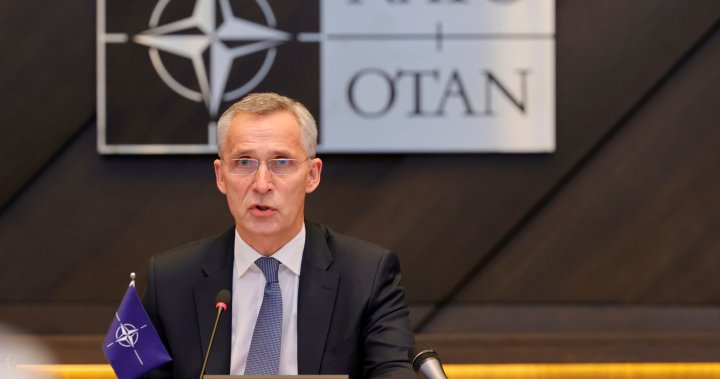
NATO chief says alliance deploying parts of quick response force over Russian invasion
Global News
The NATO chief said the alliance is resolute in imposing consequences on Russia as well as Belarus, which has supported the Russian invasion of Ukraine.
The North Atlantic Treaty Organization (NATO) will deploy elements of a quick response military force with the goal of preventing “spillover” of the violent and unprovoked war launched by Russia against Ukraine early Thursday morning.
Secretary General Jens Stoltenberg announced the decision in a press conference on Friday, saying the force first created following Russia’s 2014 invasion of Crimea will now be called upon as part of the military alliance’s response to the latest bloody campaign of Russian aggression.
“The Ukrainian forces are fighting bravely and are actually able to inflict damage on the invading Russian forces. But again, it is a very fluid and evolving situation,” Stoltenberg said, adding that Russian President Vladimir Putin has made a “terrible strategic mistake.”
The military alliance, comprising European and North American security partners, is resolute in imposing consequences on Russia as well as Belarus, which has supported the Russian invasion.
And Stoltenberg said the deployment of “elements” of both the NATO Response Force and the Very High Readiness Joint Task Force (VJTF) specifically is meant to make it clear that no threat to eastern European member states will be tolerated.
“This goes far beyond Ukraine. This is about how Russia is actually challenging, contesting core values for our security and demanding that NATO should withdraw all forces and infrastructure from almost half our members,” said Stoltenberg.
“And they have stated that if you do not do that, if you don’t meet their demands, there will be what they call ‘military technical consequences.’ So we have to take this seriously. That’s exactly why we are now deploying the NATO Response Force for the first time in the collective defence context.”
The VJTF is what Stoltenberg described as the “lead element” of the 40,000-strong NATO Response Force. It was created in 2014 in response to crises in the Middle East and Russia’s invasion of Crimea, and “is permanently available to move within days to defend any Ally.”

